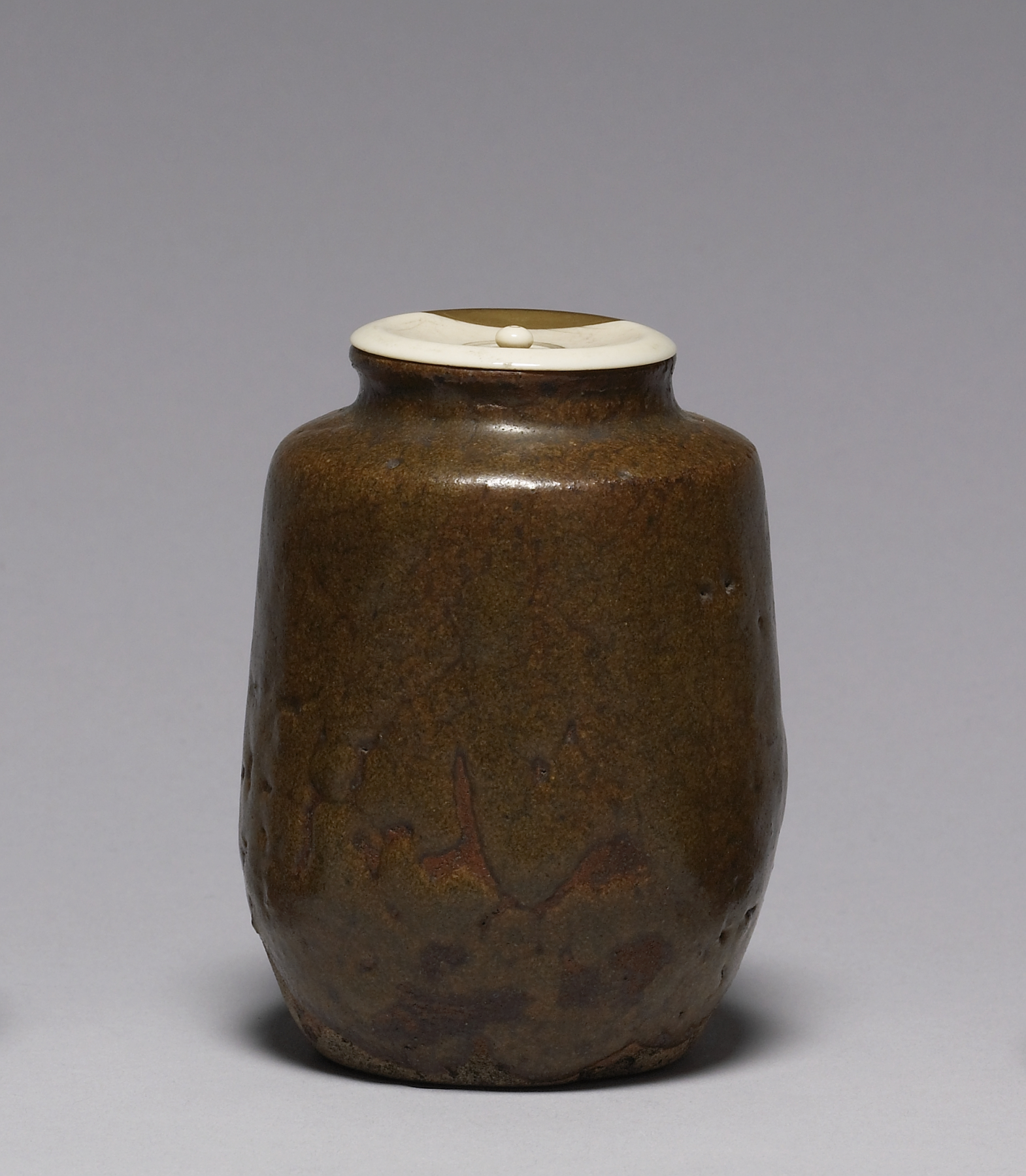Tea Caddy in "Katatsuki" (Shouldered Jar) Form
(Japan and Korea )
Mino or Seto ware. The Seto and Mino regions became centers for the production of unglazed utilitarian wares. Potters drew inspiration from Chinese ceramics, including green celadon porcelains and dark brown tenmoku wares. The earliest Seto ceramics may have evolved from failed attempts to reproduce Chinese celadons. Later Seto wares were given a brown iron glaze and fired at high temperatures to create glossy surfaces. Vessels from the nearby Mino kilns were low-fired and, therefore, present a less polished appearance than Seto wares.
Provenance
Provenance (from the French provenir, 'to come from/forth') is the chronology of the ownership, custody, or location of a historical object. Learn more about provenance at the Walters.
William T. / Henry Walters Collection, Baltimore; Walters Art Museum, 1931, by bequest.
Conservation
| Date | Description | Narrative |
|---|---|---|
| 9/29/1987 | Examination | examined for condition |
| 10/25/2006 | Treatment | cleaned; loss compensation; repaired; other |
Geographies
Japan (Place of Origin)
Measurements
3 3/16 in. (8.1 cm)
Credit Line
Acquired by William T. or Henry Walters
Location in Museum
Not on view
Accession Number
In libraries, galleries, museums, and archives, an accession number is a unique identifier assigned to each object in the collection.
In libraries, galleries, museums, and archives, an accession number is a unique identifier assigned to each object in the collection.
49.1171


